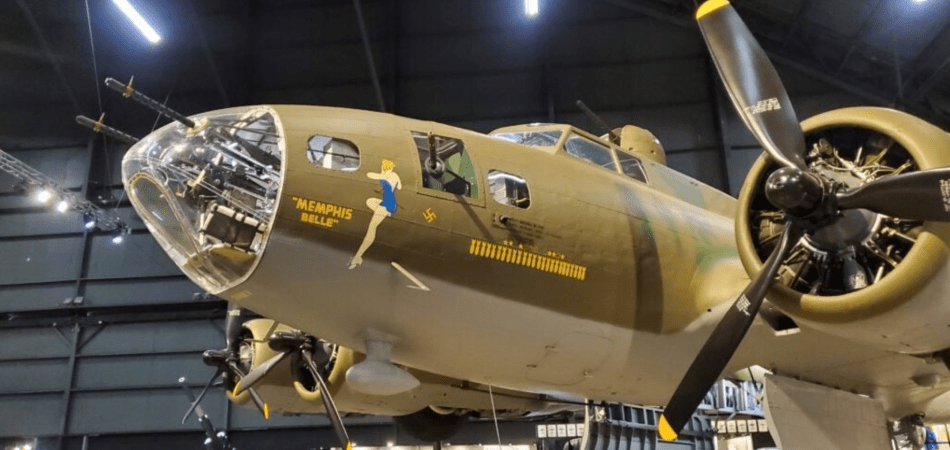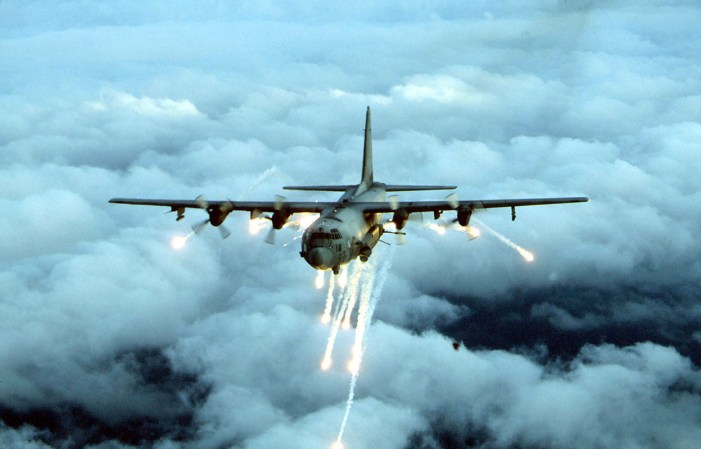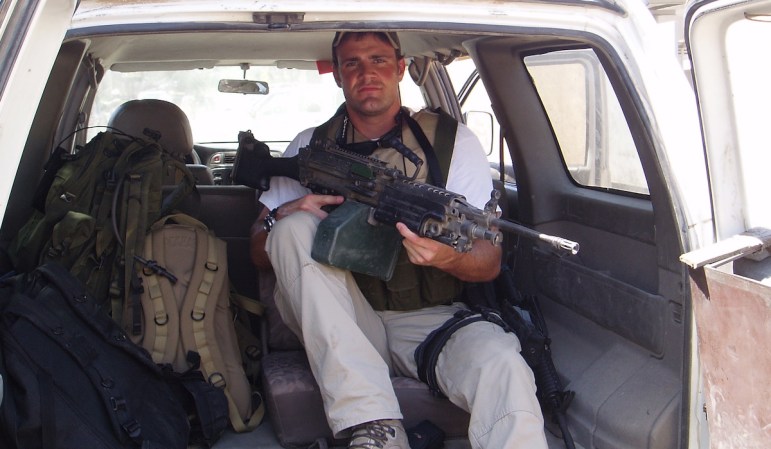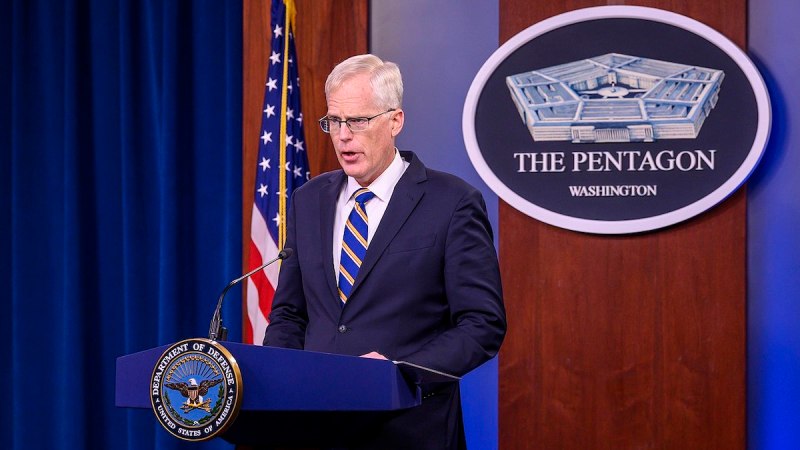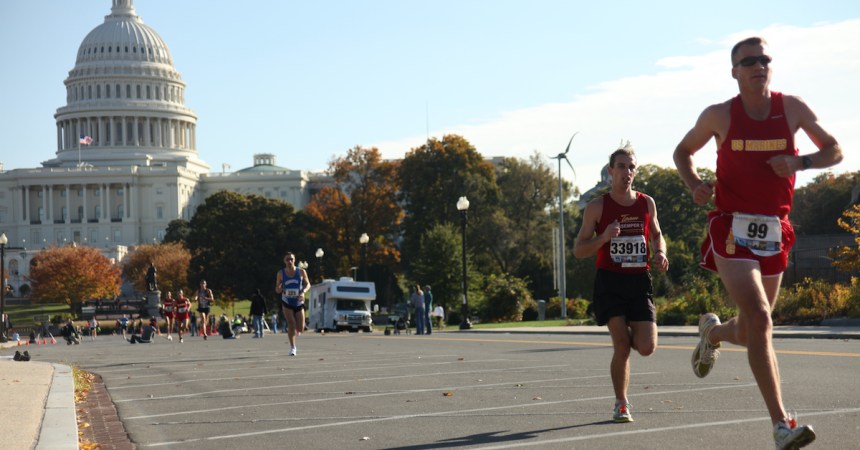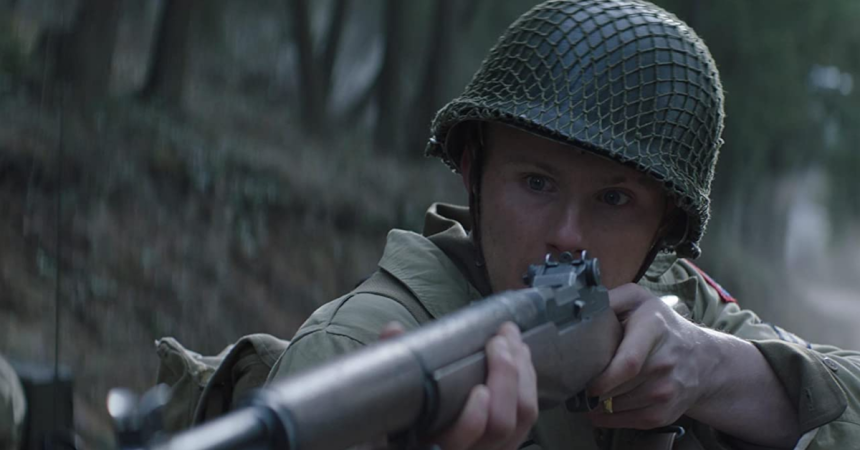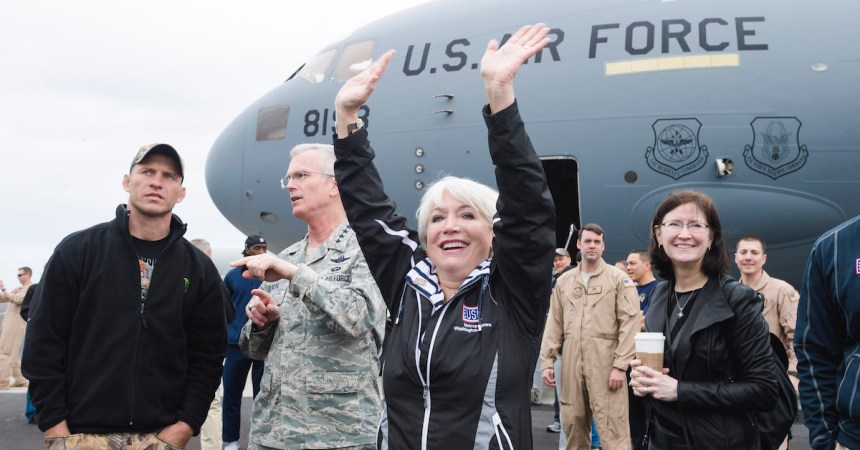The C-47 fulfilled a number of roles in World War II and Korea. It was a supply plane, a plane for dropping paratroopers, and a tow for gliders.
But it was in the Vietnam War that the “Gooney Bird” would get its greatest mission — flying three 7.62mm miniguns through the night to devastate North Vietnamese and Viet Cong forces.

The idea for a side-firing gunship had been floating around military circles since at least 1926. In fact, the technique had been tested successfully in 1927 when 1st Lt. Fred Nelson flew a DH-4 with a mounted .30-cal machine gun and destroyed a target on the ground.
But the Army Air Corps and the Army Air Forces never came around to the idea. It was 1963 before the idea of a side-firing aircraft got another serious test. A C-131B modified with gunsights and a minigun was successful in early tests and the experiment was repeated with a C-47.

The U.S. Air Force AC-47 Dragon aircraft flies missions over South Vietnam in support of allied outposts. (Photo: Public Domain)
The C-47 performed swimmingly as well, and Air Force leader Gen. Curtis LeMay approved the modification of two planes in 1964.
The final combat variant of the AC-47 consisted of the cargo plane with three 7.62mm miniguns mounted on the left side — two in modified portholes near the cargo door and one in the cargo door itself. The triggers for the three guns were connected to a button in the pilot’s compartment.
The pilots would take off with a 7-man crew and seek out small bases and villages under fire by North Vietnamese forces. When fighting popped off, the crew would drop flares out of the open door and the pilot would fly a race track pattern over the target, pouring fire on it the whole time.

If the threat was too large for the AC-47, the flares it dropped would light up the target for follow-on fighters. The AC-47 would stay in the area, directing the attacks by other aircraft.
The AC-47, dubbed “Puff, the Magic Dragon,” by an officer who saw it at work, was so effective that the Air Force launched Project Gunship II, the program which resulted in the AC-130 still in service today.

A number of AC-47 pilots and crew members were cited for bravery while serving aboard the plane, including Medal of Honor recipient Sgt. John L. Levitow. Levitow was on an AC-47 that was struck by a mortar round.
Though he was peppered by approximately 40 pieces of shrapnel in the blast, he noticed that a flare — activated by another crewmember just before the blast — was rolling around the cargo area.
The flare had yet to fully ignite, but it was only a matter of time before it would, possibly killing the crew on its own and almost certainly causing the cargo hold of ammunition to go off. Levitow crawled to the flare, held the burning implement against his already wounded body, and moved to the door with it.
He was able to throw it out just before the flare ignited.






